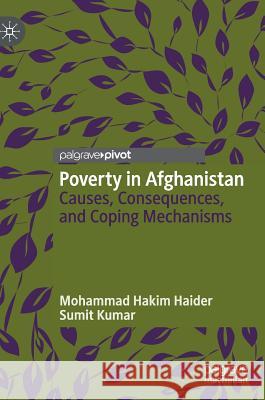Poverty in Afghanistan: Causes, Consequences, and Coping Mechanisms » książka
topmenu
Poverty in Afghanistan: Causes, Consequences, and Coping Mechanisms
ISBN-13: 9783030108588 / Angielski / Twarda / 2019 / 154 str.
Kategorie:
Kategorie BISAC:
Wydawca:
Palgrave Pivot
Język:
Angielski
ISBN-13:
9783030108588
Rok wydania:
2019
Wydanie:
2018
Ilość stron:
154
Waga:
0.35 kg
Wymiary:
21.0 x 14.8
Oprawa:
Twarda
Wolumenów:
01
Dodatkowe informacje:
Wydanie ilustrowane











